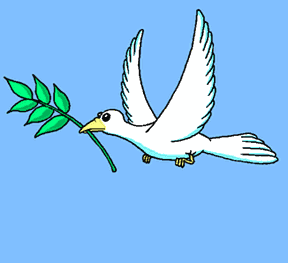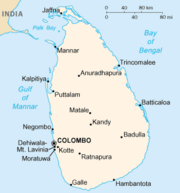This is about My country Sri Lanka. Sri Lanka, officially the Democratic Socialist Republic of Sri Lanka (pronounced /ˌʃriːˈlɑːŋkə/, Sinhalese: , Tamil: இலங்கை; known as Ceylon (/sɪˈlɒn/) before 1972 and as Taprobane (/təˈprɒbəni/) in ancient times) is an island country in South Asia, located about 31 kilometres (19.3 mi) off the southern coast of India. It is home to around twenty million people. Because of its location in the path of major sea routes, Sri Lanka is a strategic naval link between West Asia and South East Asia, and has been a center of Buddhist religion and culture from ancient times. Today, the country is a multi-religious and multi-ethnic nation, with more than a quarter of the population following faiths other than Buddhism, notably Hinduism, Christianity and Islam. The Sinhalese community forms the majority of the population, with Tamils, who are concentrated in the north and east of the island, forming the largest ethnic minority. Other communities include Moors, Burghers, Kaffirs and the Malays. Famous for the production and export of tea, coffee, coconuts and rubber, Sri Lanka boasts a progressive and modern industrial economy and the highest per capita income in South Asia. The natural beauty of Sri Lanka's tropical forests, beaches and landscape, as well as its rich cultural heritage, make it a world famous tourist destination. After over two thousand years of rule by local kingdoms, parts of Sri Lanka were colonized by Portugal and the Netherlands beginning in the 16th century, before the control of the entire country was ceded to the British Empire in 1815. During World War II, Sri Lanka served as an important base for Allied forces in the fight against the Japanese Empire. A nationalist political movement arose in the country in the early 20th century with the aim of obtaining political independence, which was eventually granted by the British after peaceful negotiations in 1948. Geography and climateThe island of Sri Lanka lies in the Indian Ocean, to the southwest of the Bay of Bengal and to the southeast of the Arabian Sea. It is separated from the Indian subcontinent by the Gulf of Mannar and the Palk Strait.[12] According to Hindu mythology, a land bridge to the Indian mainland, known as Rama's Bridge, was constructed during the time of Rama by the vanara architect Nala. Often referred to as Adam's Bridge, it now amounts to only a chain of limestone shoals remaining above sea level.[12] According to colonial British reports, this is a natural causeway which was formerly complete, but was breached by a violent storm in 1480.[13] The width of the Palk Strait is small enough for the coast of Sri Lanka to be visible from the furthest point near the Indian town of Rameswaram.[citation needed] The teardrop-shaped island consists mostly of flat-to-rolling coastal plains, with mountains rising only in the south-central part. Amongst these are Adam's Peak (Sri Pada) and the highest point Pidurutalagala, at 2,524 meters (8,281 ft). The Mahaweli River and other major rivers provide fresh water to the population.[14] Sri Lanka's climate can be described as tropical, and quite hot. Its position between 5 and 10 north latitude endows the country with a warm climate, moderated by ocean winds and considerable moisture.[15] The mean temperature ranges from a low of 16 °C (61 °F) in Nuwara Eliya in the Central Highlands (where frost may occur for several days in the winter) to a high of 32 °C (90 °F) in Trincomalee on the northeast coast (where temperatures may reach 38 °C (100 °F)). The average yearly temperature for the country as a whole ranges from 28° to 30 °C (82–86 °F). Day and night temperatures may vary by 4 to 7 °C (7–13 °F). In January, the coolest month, many people wear coats and sweaters in the highlands and elsewhere. May, the hottest period, precedes the summer monsoon rains. The rainfall pattern is influenced by the monsoon winds of the Indian Ocean and Bay of Bengal, which encounter the slopes of the Central Highlands, they unload heavy rains on the mountain slopes and the southwestern sector of the island. Some of the windward slopes receive up to 2,500 millimetres (98 in) of rain per month, but the leeward slopes in the east and northeast receive little rain. Periodic squalls occur and sometimes tropical cyclones bring overcast skies and rains to the southwest, northeast, and eastern parts of the island. Between December to March, monsoon winds come from the northeast, bringing moisture from the Bay of Bengal. Humidity is typically higher in the southwest and mountainous areas and depends on the seasonal patterns of rainfall. At Colombo, for example, daytime humidity stays above 70% all year, rising to almost 90 percent during the monsoon season in June. Anuradhapura experiences a daytime low of 60% during the monsoon month of March, but a high of 79% during the November and December rains. In the highlands, Kandy's daytime humidity usually ranges between 70 and 79%. More Detail's at : http://en.wikipedia.org/wiki/Sri_Lanka
|
     Sri Lankan President Honourable MR.Mahindha Rajapaksha.  |





